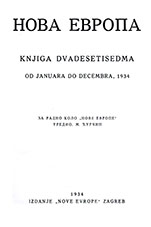
We kindly inform you that, as long as the subject affiliation of our 300.000+ articles is in progress, you might get unsufficient or no results on your third level or second level search. In this case, please broaden your search criteria.


The article investigates the circumstances of the first, nearly completely forgotten, visit of Józef Piłsudski to Poznań in 1901. Taking the conclusions of Grażyna Wyder as a starting point, the article aims at organizing and harmonizing the current knowledge on this event. The place where comrade “Wiktor” stayed in the city is identified, and a broader context is provided on his hosts, Jadwiga and Józef Guliński, Polish Socialist Party activists. This article, devoted to a small part of Piłsudski’s life, contributes to the discussion on his complicated relationship with the capital of Greater Poland.
More...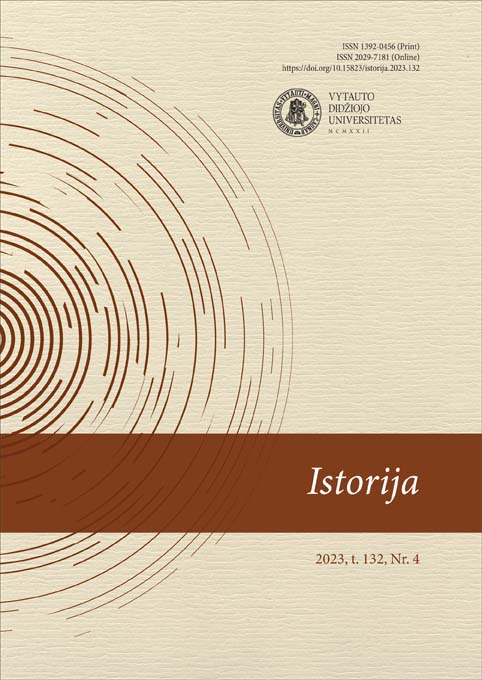
Review of: Tadeusz Katelbach: atvirai ir slaptai apie Lietuvos politiką: I tomas ATVIRAI. Vilnius: Lietuvos nacionalinė Martyno Mažvydo biblioteka, 2023, 456 p.; II tomas SLAPTAI. Vilnius: Lietuvos nacionalinė Martyno Mažvydo biblioteka, 2023, 386 p
More...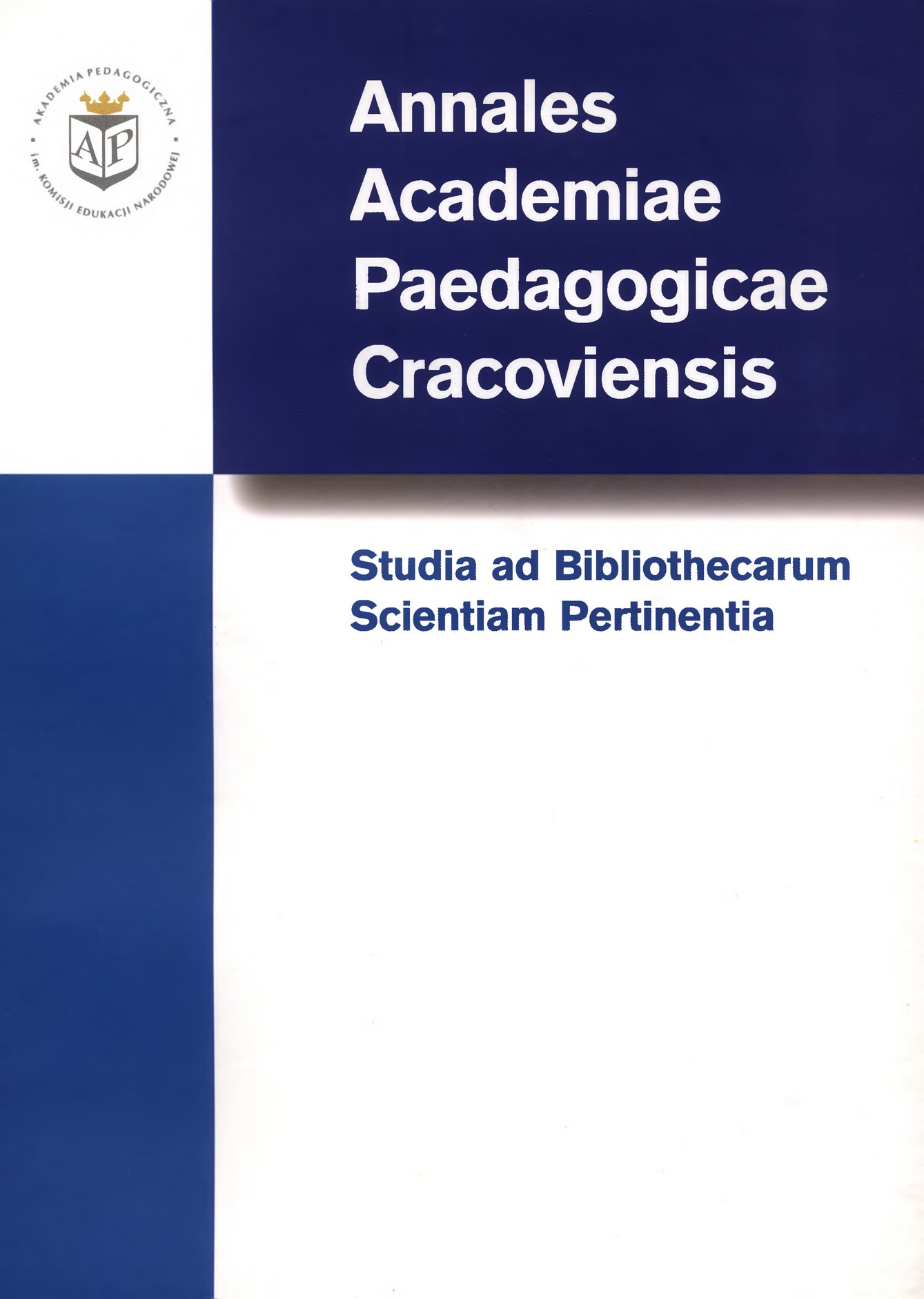
Cracow's Jewish press of the inter-war period was carefully researched and described by Czesław Brzoza. This paper deals with Jewish newspapers published in Polish in Cracow in the years 1918-1939. Titles written in Polish dominated Cracow's market of Jewish newspapers, as they constituted 52% of the published material. They included dailies, weeklies, fortnightly publications, monthlies and a magazine published twice a week. Jewish press in Polish was rather ephemeral, as 50% of the titles failed to survive for more that one year; in some cases only the first or several first issues appeared. Only one paper continued to be published over the whole inter-war period. It is worth noticing that the Jewish press written in Polish dealt with a great number and variety of topics. It was dominated by newspapers of political parties and organisations. Associations and groups of professionals had their organs; newspapers were published by youth organisations connected with political parties. There were socio-cultural newspapers and dailies. There was one magazine for children. Analysis of the content shows that the papers devoted a lot of time and space to politics, economy and Polish-Jewish relations. Numerous political polemics, postulates for the improvement of Poland's economic condition prove that the Jewish community was involved in the matters of the whole country. Cultural and ideological differences presented in the papers were to help in the fight against religious and national intolerance. Political positions, ideological and philosophical polemics mirrored the process of change taking place in Jewish political life. Jewish press written in Polish, apart from the variety of topics, had innovative editorial forms.
More...
The article discusses Alfred Justitz's overlooked work as an illustrator for the "Prager Presse," highlighting his regular contributions from 1925 to 1931, despite financial pressures and a dislike for rushed work. It details the newspaper's significance in interwar Czechoslovakia, Justitz's collaboration with authors from the Prague German-Jewish literary circle, and his thematic focus on Jewish topics, reflecting his connection to his family's roots. The typology of Justitz's illustrations is categorized into four groups, with a notable shift towards a more concise drawing style over time. The piece also touches on the technical aspects of illustration reproduction and the dispersion of Justitz's original drawings across various collections.
More...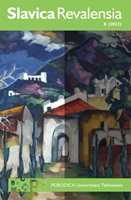
This essay offers a reading of a mysterious poem by Daniil Kharms “O tom kak Ivan Ivanovich poprosil i chto iz etogo vyshlo” (“How Ivan Ivanovich Asked and What Came of It”). The poem is analyzed in the context of time, from the noise of which emerge the events and details required to decipher “How Ivan Ivanovich Asked and What Came of It,” starting with the poem’s dedication. More broadly, reading in context allows us to explain some features of Kharms’ poetry in general starting from his “Vzir’ Záumi” (1925—1926) and ending with “Exercises in Classic Meters” (1933—1934).
More...
This paper aims to show that Boris Pasternak’s Safe Conduct was published two months before what was previously thought to be the book’s official publication date—not in November 1931, but in the early September. The article also provides some previously unknown information about Valentin Stenich (Valentin Smetanich).
More...
This paper aims to offer a supplement to the rich and suggestive commentary by A. Agapov, D. Bresler and Chr. Konstantinova in the recent (2022) edition of the novel Beyond Tula (1931) by Andrei Nikolev (a pseudonym of A. N. Egunov, a classical scholar, translator, and poet). The article, in its collection of remarks, identifies a number of quotations and allusions present in Nikolev’s chef-d’œuvre as well as some sources of his inspiration and features of his narrative techniques.
More...
This paper aims to complement Vsevolod Zeltchenko’s addenda to a recently published annotated edition of Beyond Tula by Andrei Nikolev (Andrei Egunov).
More...
This article is the extended version of the keynote lecture Roman Timenchik delivered on May 12, 2023 at Tallinn University at the opening ceremony of a newly established Graduate Student Conference in Russian Language and Literatures (Helsinki—Tallinn—Tartu). Roman Timenchik singles out five principles of annotating a text and the eleven sections required for the ideal annotated edition of Anna Akhmatova’s poetry.
More...
This article is devoted to the study of Maximilian Voloshin’s creative process. In particular, it notes that the imagery of the Lichiny (Images) section of the book Neopalimaia kupina (The Burning Bush, 1924) received further development in the multi-figured composition of the long poem Rossiia (Russia, 1924). The proof comes from the corresponding sections of a previously unpublished Voloshin’s workbook preserved in his archival collection.
More...
This article addresses the question of Mikhail Bulgakov’s reception in the Baltic states of the 1920s and 1930s. I focus my initial attention on the political aspect, and then proceed to aesthetic questions. My research is based on newspapers and magazines published in Estonia and Latvia in Russian, Estonian and German. Finding traces of Bulgakov in this way allows me to make certain conclusions about what Russian readers living in the Baltic states of the period thought about the events in the Soviet Union, and in particular events in the cultural sphere.
More...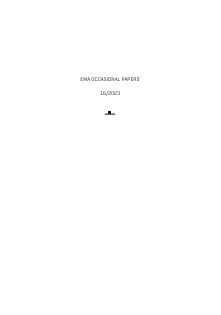
Vene mereväe ohvitserkonnale oli aurulaevade ajastu peamiseks taktikaliseks õpikuks 1863. aastal ilmunud analüüs „Uued aurulaevade taktika põhimõtted“, mis põhines admiral Grigori Butakovi mälestustel ja Krimmi sõja kogemustel. Samas ei arutletud kõrgemas sõjalises juhtkonnas mereväe strateegiliste väljavaadete üle. Kuigi üksikud väejuhid mõistsid, et laevastik on vajalik selleks, et kaitsta jalaväelaste tegevust Lääne- ja Musta mere rannikul, siis üldiselt suhtuti mereväkke pessimistlikult ning Krimmi sõja tulemusena hävines ka Musta mere laevastik. Meresõjalise mõtte seisukohalt hakati sajandi lõpus eeskuju võtma Alfred Mahani ja Philip Colombi avamere koolkonna kontseptsioonidest, mis esialgu kattusid Vene impeeriumi ekspansionistlike välispoliitiliste ambitsioonidega Kaug-Idas. Mõlema teoreetiku teosed tõlgiti vene keelde juba aastatel 1894–1895. Nende autorite uurimused innustasid andekamaid Vene ohvitsere pöörama rohkem tähelepanu mereväe strateegilistele aspektidele, mis viis selleni, et 1895. aastal hakati mereväeakadeemia meresõja osakonnas esimest korda õpetama 6–8-kuulistel struktureeritud kursustel mereväe strateegiat, taktikat ning ajalugu.
More...
Merejõudude juhataja Hermann Salza mainis juba 1926. aastal meresõjanduse käsiraamatu eessõnas: „Mind rõõmustaks väga, kui seda raamatut ka maaväe ringkondades loetakse sest Eesti on mereriik ja vabadussõda on meile mere tähtsust paremini näitanud kui minu raamat seda teha suudab.“ Juba Eesti Vabadussõja alguses mõistis kõrgem sõjaline juhtkond merenduse tähtsust väikeriigi kaitsmise kontekstis. Sõjavägede ülemjuhataja kindral Laidoner on ilmekalt kommenteerinud sõja algfaasi kriitilist olukorda merel…
More...
Hermann Salza (1885–1946) oli üks väheseid Vene mereakadeemia haridusega mereväelasi Eestis. Merejõudude Staabi ülema ja juhatajana ning sõjanõukogu ja kaitseministeeriumi nõukogu liikmena sai ta ka reaalselt mereväe arengut mõjutada. Peale selle tegutses ta pedagoogina: enne II maailmasõda sõjakooli lõpetanud mereväeohvitseride neljast lennust õppis kolm suuremal või vähemal määral tema käe all. Lisaks haris ta kindralstaabi ohvitseride kursustel ja Kõrgemas Sõjakoolis meresõja valdkonnas teiste väeliikide vanemohvitsere. Seega on Salza paratamatult mõjutanud mitte ainult Eesti mereväe arengut, vaid ka sõjalist mõtlemist. Kuivõrd tema ideed, mis mõjuvad kohati üllatavalt tänapäevasena, õpilastele üle kandusid, väärib omaette uurimist, aga see jääb esialgu vaatluse alt välja.
More...
Sõjalist mõtet ei saa uurida selle mõistestikku tundma õppimata. „Rannakaitse“ on termin, mida kasutati Eesti militaarkeeles enne II maailmasõda küllalt sageli, kuid mille sisu on jäänud hämaraks. Eesti Entsüklopeedia 1936. aasta väljaandes kirjutatakse rannakaitse kohta nii: „Rannakaitse – sõjaline kaitse kallaletungide vastu merelt, s. o. vaenuliste sõjalaevastikkude ja dessantide vastu; r-e moodustavad vastavad laevastikud, ranna- e. merekindlused, rannapatareid, mere mineerimine ja r-ks määratud maa- ja lennuväeosad.“ Kuid terminid kipuvad sageli oma, definitsioonist sõltumatut elu elama. Roger Barnett on väitnud, et just mereväelased eelistavad definitsioonidele abstraktsemaid ja paindlikumaid, aga kontekstiga tihedamalt seotud mõisteid või kontseptsioone (ingl concept), sest terminid polegi pahatihti täpselt defineeritavad või ei sobi nende definitsioon igas kontekstis.2 Seepärast tasub uurida, kuivõrd kasutati rannakaitse mõistet Eesti Entsüklopeedias defineeritud kujul ja kui palju sellest kõrvale kalduti.
More...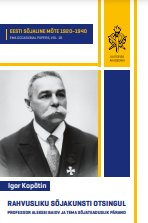
Peab tõdema, et Kaitseväe Akadeemia ajaloost tunneme üldjuhul silmapaistvaid ning kõrge positsiooniga isikuid, valdavalt Kaitseväe Ühendatud Õppeasutuste või Sõjakooli endiseid ülemaid, kuid sedagi peaasjalikult nende sõjaväelise karjääri ja lahinguliste teenete tõttu Vabadussõjas. Vähem on tähelepanu pälvinud need persoonid, kes kujundasid õppeasutuste sisulist tegevust – erinevate distsipliinide õpetamise juhid, õppejõud, kelle mõtted, teadmised ja oskused lõid sisu toona antud haridusele ning suunasid (teadus)arendustegevust.
More...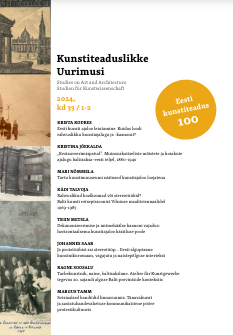
The purpose of this article is to contextualise the activities of the first studio founded and run collectively by women. It analyses how these women constructed their professional identities while operating in a male-dominated field, and shows their role as the first modernisers of applied art in the local Estonian art scene in the early 20th century. The article contributes to the nascent study of the first Baltic women designers.
More...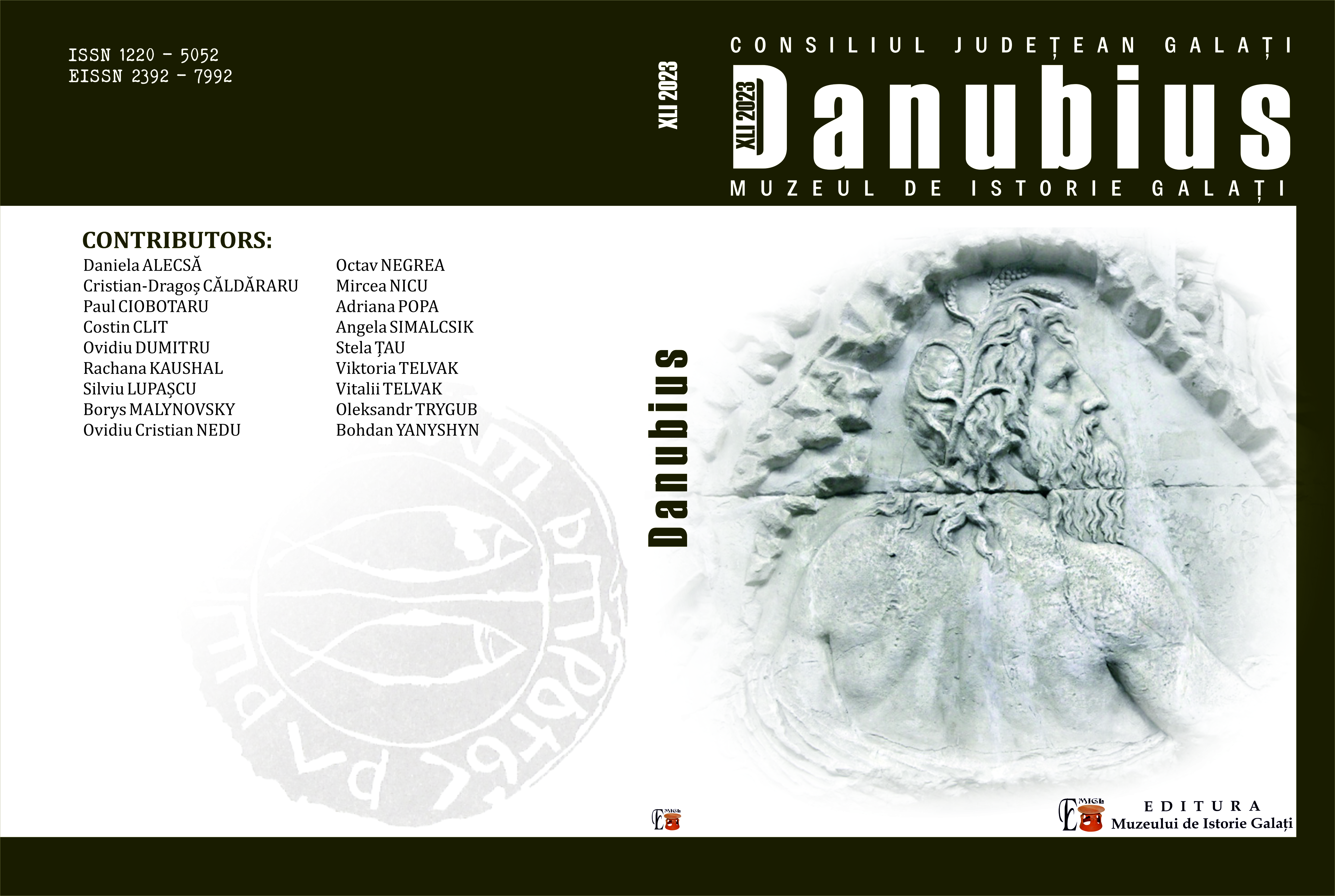
The article is dedicated to the study of the peculiarities of the discussion of historiographical concepts and socio-political initiatives of M. Hrushevsky in French scientific literature and journalism of the first third of the 20th century. The process of the Ukrainian historian establishing relations with French intellectuals (A. Mazon, P. Bouillet, J. Pelissier, etc.) and his purposeful work on popularizing the scientific achievements of Ukrainian studies in the French language have been reconstructed. The result was numerous reviews of the works of the Ukrainian historian on the pages of “Le Monde Slave”, “Revue des Études Slaves” and “Les Annales des nationalités”. The article has summarized that discovering the previously unknown East Slavic nation thanks to the works and periodicals of M. Hrushevsky, his French colleagues unanimously wrote about the scientist as a wake-up call for his compatriots and a tireless popularizer of Ukrainian cultural heritage among the Western European intelligentsia. In general, the analyzed French Hrushevsky studies became an important component of the Ukrainian-French intellectual dialogue of the first third of the 20th century.
More...
The paper investigates the objectives and strategies of Slovenian political groups during the period spanning from the December 1 Act of 1918 to the elections for the Constituent Assembly in November 1920. Despite shared external political goals among the Slovenian parties and their common ambition to participate in government on the domestic front, this period witnessed numerous internal divisions. Within the Slovenian National Party (Slovenska ljudska stranka – SLS), a rift emerged between critics of Greater Serbian policies and opportunists aiming for a post-election coalition with Serbian radicals (Narodna radikalna stranka). Despite the ambition of both preserving the status of the strongest Slovenian political option and using the coalition potential for government participation, which offered a better perspective for achieving foreign policy objectives, the party successfully preserved its organizational integrity. Simultaneously, the Slovenian liberals, who welcomed the Kingdom of SCS with enthusiasm unlike the majority of conservatives, experienced fragmentation into several parties. This was fuelled by the expectation that Slovenian inclusion in the South Slavic state would create more manoeuvring room in Slovenian territory for Yugoslav unitary political forces. Consequently, some liberals sought to capture the marginal segments of the electorate traditionally aligned with the conservatives. The average Slovenian voter, however, showed a reluctance towards unitarism, and the best electoral result was achieved by the liberal faction emphasizing Slovenian autonomy during the pre-election period. The social democratic pole achieved a relatively good result, even as it experienced internal division. Reformists directed their criticism at their Slovenian political competitors, while communists adopted a more radical approach towards Serbia. They criticized the SLS only implicitly and even absorbed segments of its pre-war program, penetrating its electorate without major direct conflict.
More...